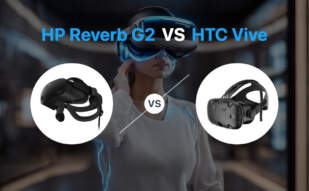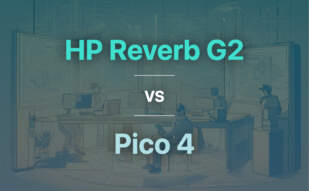Between the premium Varjo Aero and the consumer-friendly Reverb G2, one’s choice rests on distinct user needs. Professionals demanding high fidelity and clarity for precise VR applications would appreciate Aero’s superior visual quality and eye-tracking. In contrast, Reverb G2 is optimal for consumer-level engagement, offering sharp images, comfort, and seamless motion tracking at a more accessible price point.
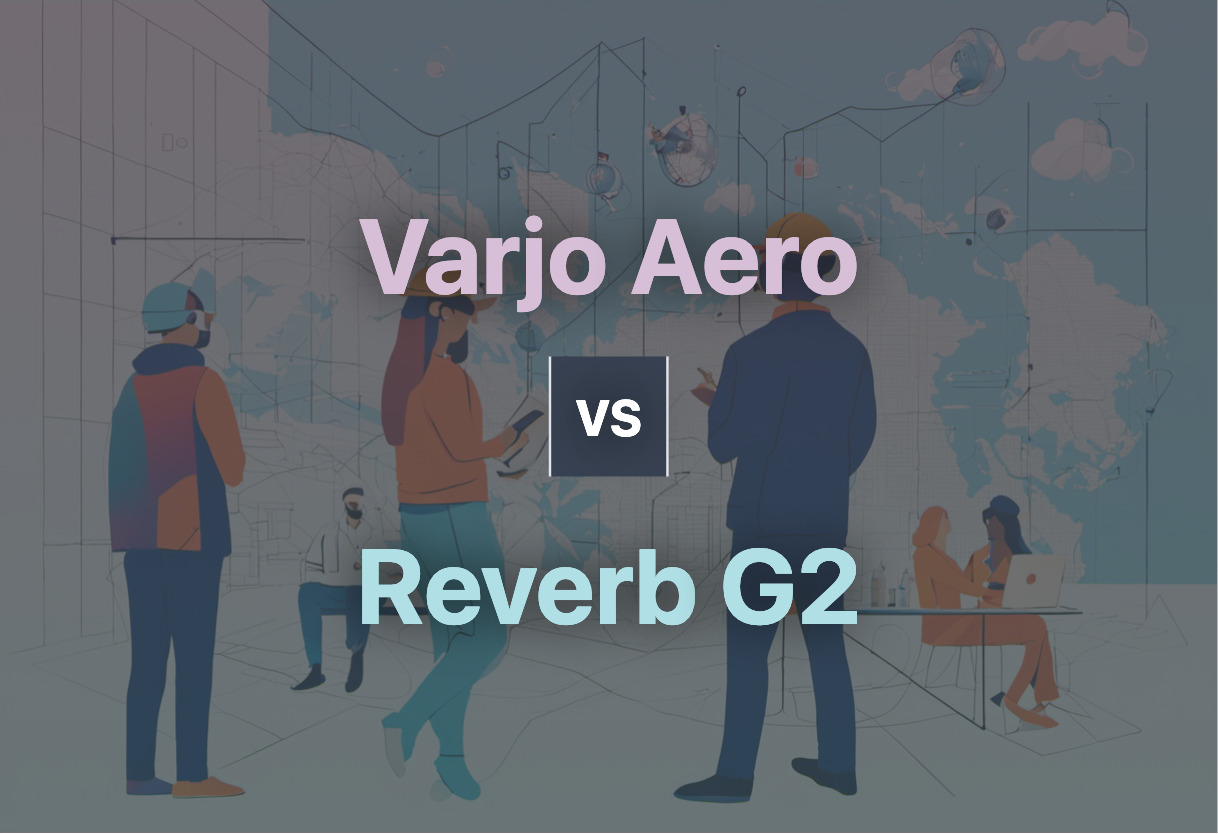
Key Differences Between Varjo Aero and Reverb G2
- Price: Aero sits at a steeper $2,000 against G2’s consumer-friendly $599.99.
- User base: Aero caters to businesses and wealthy enthusiasts, while G2 prioritizes general consumers.
- Visual quality: Aero offers a high PPD of 35 and 99% sRGB color space, with G2 providing strong competition with a 2160×2160 resolution per eye.
- Compatibility: Aero’s Nvidia-dominated profile contrasts G2’s support for both NVIDIA GeForce and AMD GPUs.
- Applications: Aero is leveraged for professional VR, stretching to flight simulation training. G2, in turn, harbors broad gaming capabilities.
| Comparison | Varjo Aero | Reverb G2 by HP |
|---|---|---|
| Price | $2000 | $599.99 |
| Pixels per degree (PPD) | 35 | Unclear, |
| Display | Mini-LED LCD: 2880 x 2720 px per eye | 2160 x 2160 px per eye, LCD |
| Color Calibration | 99% sRGB, 95% DCI-P3 | Unclear, |
| Refresh Rate | 90 Hz | 90 Hz |
| Field of View | 115° horizontal | Unclear, |
| Required PC Connections | DisplayPort 1.4, USB-A 3.0 / USB-C 3.1 | DisplayPort-to-mini, USB-C-to-USB-A |
| Performance | Highly recommended for simulation | Occasional issues with tracking |
| GPU Compatibility | NVIDIA GeForce RTX 20- & 30- series, excludes AMD | Intel Core i5, Nvidia GeForce 1080 or AMD Radeon 5700 |
| Headset Weight | 487g + 230g headband | Unclear, |
| Comfort | Three-point precision fit headband | Facemask lined with memory foam |
| Set-up | Requires compatible PC | Easy via Windows Mixed Reality portal |
| Software Compatibility | Professional 3D software (Gravity Sketch, KeyVR). | SteamVR and Windows Mixed Reality |
What Is Varjo Aero and Who’s It For?
Billed as “prosumer” VR, Varjo’s Aero is an embodiment of luxe tech, targetted at businesses and advanced VR patrons who demand nothing less but the clearest vision. Engineered with Varjo’s high-precision technology, it’s prized for applications where visual fidelity is non-negotiable, such as flight simulation, design, and research.
While the Aero is rich in features, it misses out on Varjo’s proprietary ‘bionic display’. It caters to users with compatible Windows PCs, soles Nvidia devotees, as it lacks AMD graphics cards support. Its high price tag is justified by offering an unsurpassed VR experience that tops mainstream rivals.
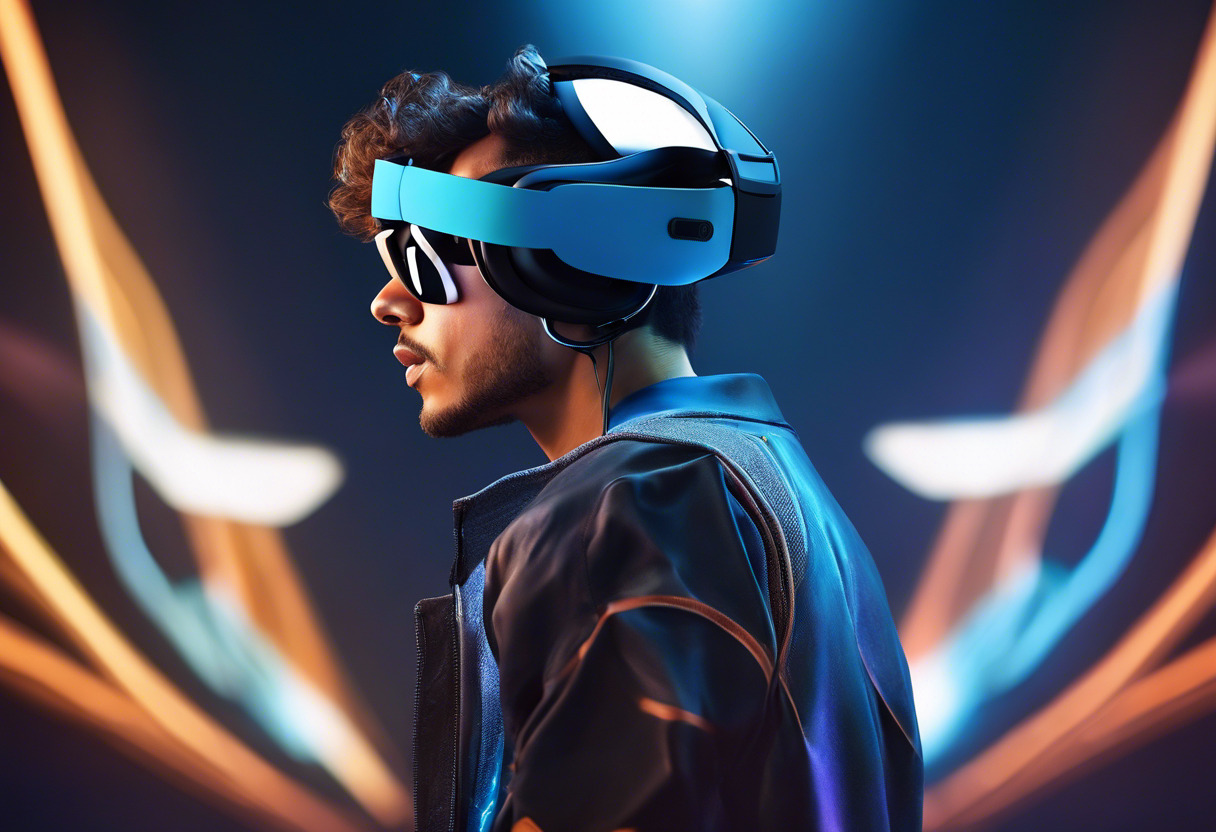
Pros of Varjo Aero
- High-end 35 PPD clarity.
- Active cooling and comfortable 3-point precision fit headband.
- Supports professional 3D software.
- Superior VR experience outdoing mainstream manufacturers.
Cons of Varjo Aero
- Lacks support for AMD graphics cards.
- High cost could be a barrier for many buyers.
- The absence of eye-relief adjustment.
- Requires a high-performing compatible Windows PC.
What Is Reverb G2 and Who’s It For?
An affordable choice for VR adepts, HP’s Reverb G2 is an ‘off the shelf’ consumer headset compatible with Microsoft’s Windows Mixed Reality platform. Laying superior claim in its price range, it offers the sharpest visuals, making it an apt pick for gaming and other VR applications.
However, it does suffer from occasional camera motion-tracking hiccups affecting controller movements. It’s less pricey than power-packed options such as Valve Index and HTC Vive Pro 2, providing value for those on a tight budget without compromising on visual quality.

Pros of Reverb G2
- Budget-friendly choice for VR beginners.
- Provides the sharpest visuals in its price range.
- Facemask incorporates memory foam for comfort.
Cons of Reverb G2
- Occasional hiccups with camera motion tracking.
- Less powerful than higher-end, more expensive counterparts.
- Interface issues with Windows Mixed Reality platform.
- Heavy hardware requirements for full operation.
Varjo Aero vs Reverb G2: Pricing
The Varjo Aero, priced at $2000, is a high-end VR headset for businesses and affluent enthusiasts, while the Reverb G2 by HP, priced at $599, offers a sharp VR experience at a lower cost for general consumers.
Varjo Aero
The Varjo Aero comes at a premium, priced at $2000. This robust price point caters primarily to businesses and affluent enthusiasts who value unmatched visual clarity and detail. The high cost is justified by exceptional features such as 35 PPD, 99% sRGB, 95% DCI-P3 color space, and built-in eye-tracking at 200 Hz. However, the absence of AMD GPU support and a lack of eye-relief adjustment are considerations that need to be factored into this purchase decision.
Reverb G2
The Reverb G2, built by HP for Microsoft’s Windows Mixed Reality platform, is an affordable alternative at $599. Very much a consumer headset, it offers a sharp VR experience, with screens displaying at 2160 x 2160 pixels at 90Hz. It is priced competitively, being cheaper than other leading VR headsets while featuring clear and sharp images. However, it falls behind standalone devices when it comes to technical benefits.
Varjo Aero or Reverb G2: Which One Reigns Supreme?
In the battleground of AR/VR headsets, choosing a clear winner between Varjo Aero and Reverb G2 largely hinges upon one’s key requirements. Allow me to break it into windfall sections.
High-Fidelity Enthusiasts
For those craving unparalleled visual clarity and color accuracy, Varjo Aero triumphs. Its 35 PPD, 99% sRGB coverage, coupled with mini-LED LCD technology, guarantees a crisp viewing experience. It does come with a hefty price tag, letting only the most committed to partake.

Flight Simulator Aficionados
Astonishing fidelity and expansive 115° FOV renders Varjo Aero indispensable for those in professional flight simulation. Adjustments for eye-relief is lacking but the extensive sweet-spot redresses it somewhat.
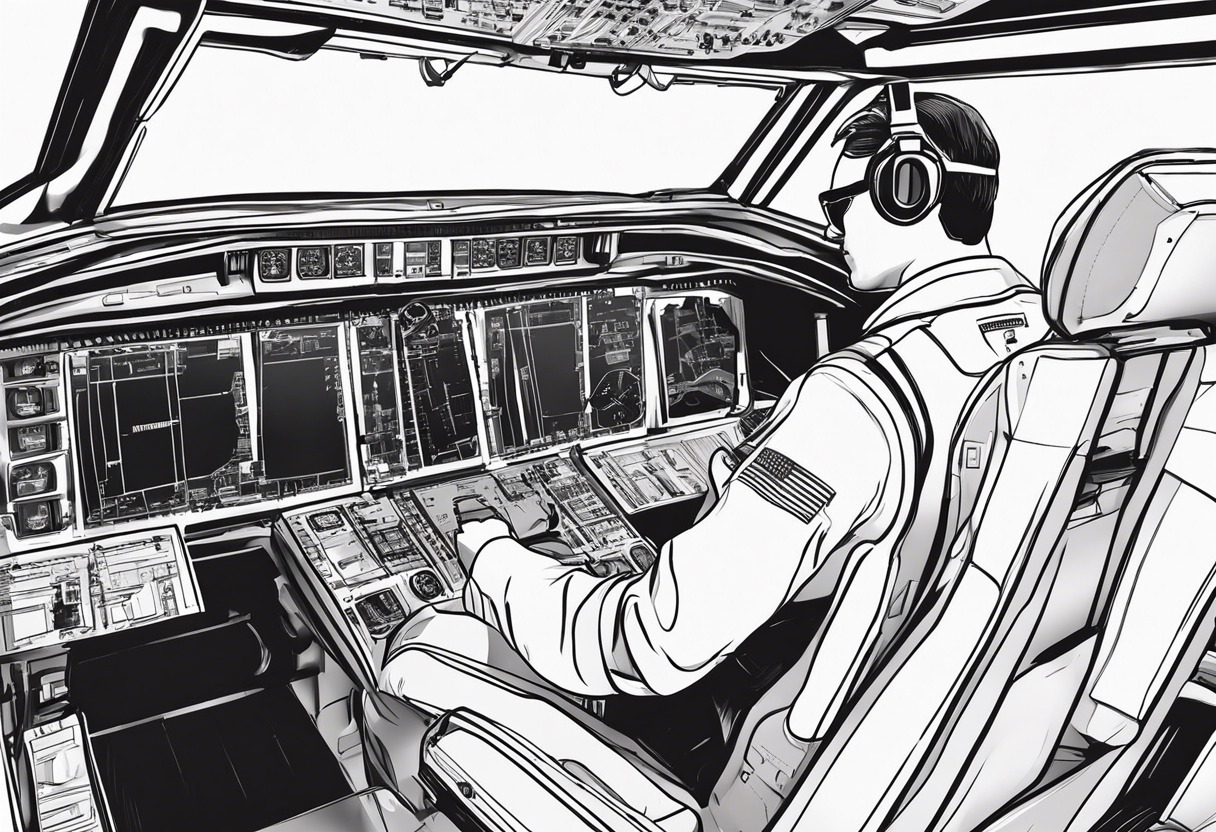
Budget-Constrained Gamers
The budget-savvy audience should look no further than Reverb G2. It reigns the economic front, offering an impressive 2160 x 2160 resolution and 90Hz refresh rate at a fraction of Aero’s price. Though it might falter on the fidelity front, its price eclipses such glitches admirably.
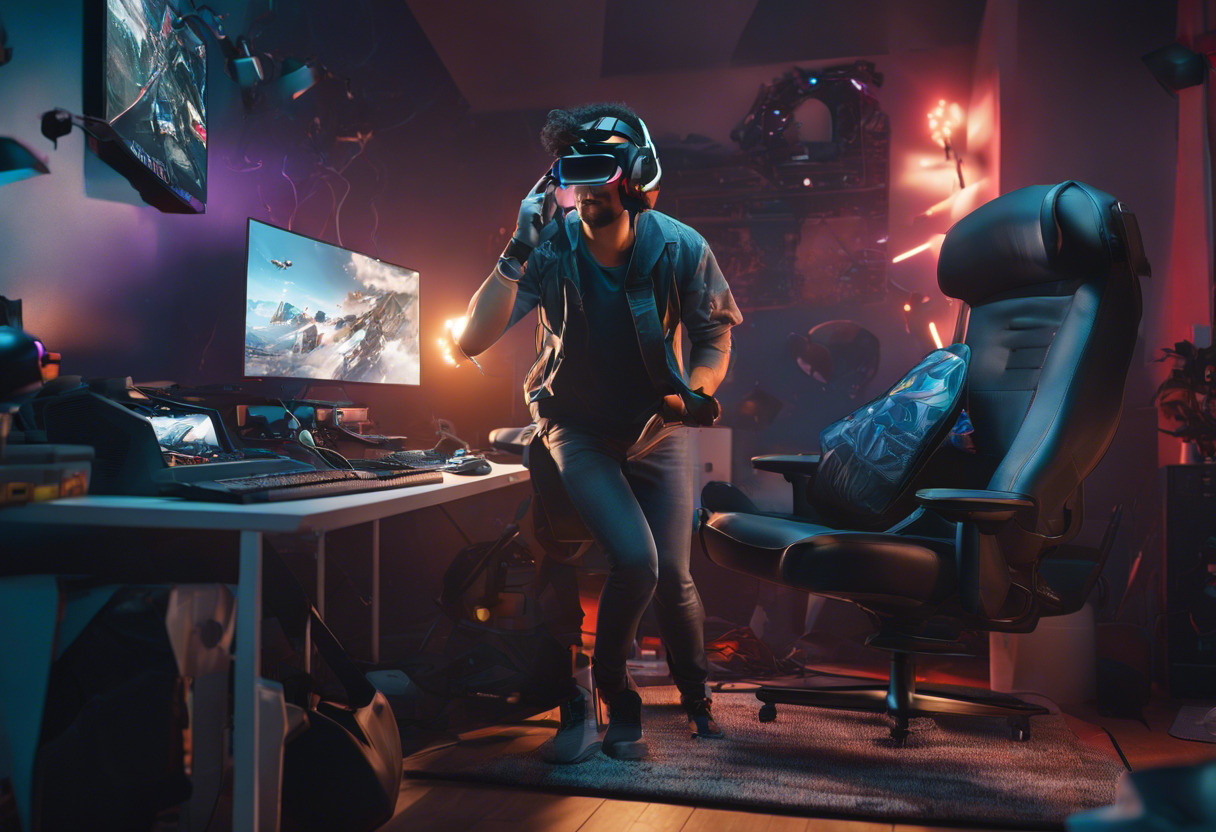
Casual VR Users
If you are a casual VR user, Reverb G2, again, bags the crown. The comfortable memory-foam facemask, ease of setup, and compatibility with popular platforms like SteamVR make it a smart buy for those seeking a robust VR experience without breaking the bank.

Navigating the VR sphere? In your journey, if visual fidelity is your lighthouse, Varjo Aero will serve as a magnificent vessel. For those sailing a budget-conscious sea, HP’s Reverb G2 provides an adventurous but cost-effective voyage. Choose wisely.
Hannah Stewart
Content writer @ Aircada, tech enthusiast, metaverse explorer, and coffee addict. Weaving stories in digital realms.



